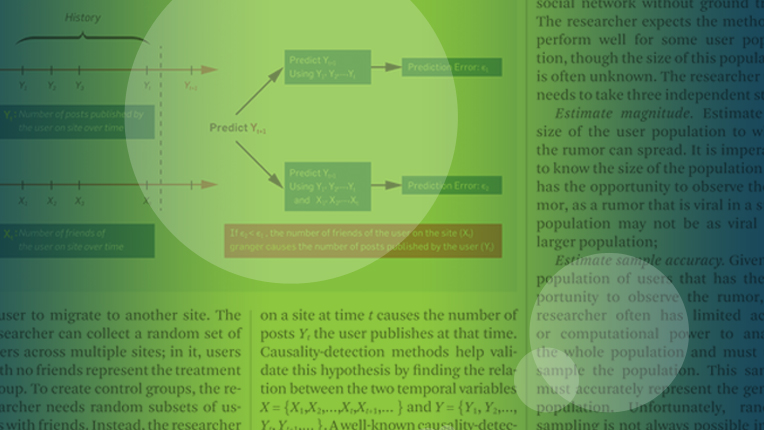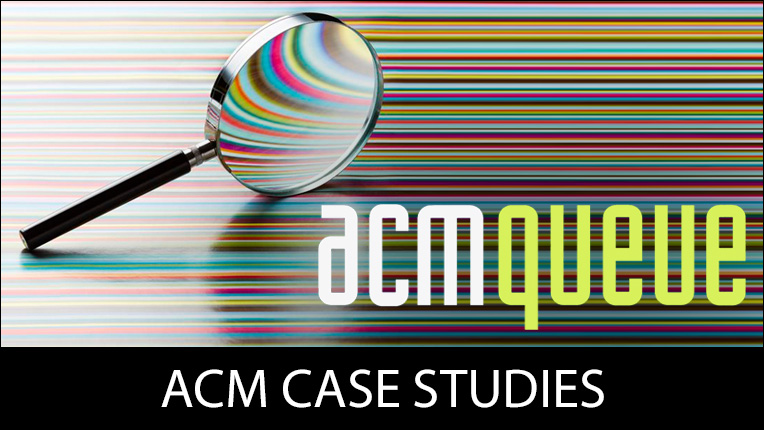Production Pointers
Following are some details to keep in mind for uniformity and quality in your newsletter issues:
Your basic goal should be to supply headquarters with consistent "Electronic Copy" to whatever extent possible. The more preparation work needed to be done by headquarters or by the printer can increase the turn around time and the expense.
Image Size and Copy Preparation:
- The image must be centered on the page.
- Provide submission guidelines for acceptance and see that they're adhered to.
- The image size for an 8 1/2" x 11" or 8 1/2" x 14" page is 7" x 10".
- The width of the page is determined by the widest line.
- The length of the image is the distance from the top of the first line to the baseline of the page number (folio) or footline. Not to exceed 7" x 10".
- The best way to center an image is to use your running head, footline or page number (folio) as a reference point.
- Running Heads are identification lines placed above the text and may contain the publication's name and the page number. They can be centered, flush left or flush right.
- Footlines are identification lines placed below the last line of text, that can contain the publication's name and the page number. They too need to be centered, flush left or flush right.
- Page numbers (folios) are the simplest method for centering the image. They can be placed at the top of the page or the bottom of the page, but must follow the same guidelines as running heads and footlines.
Remember: If you choose to provide these, in place, they must fall within the image area and be consistent from page to page.
Requesting to have the printer provide the page numbers, headlines or footlines, or reduce copy results in per page charges.
What Prints Best:
- Black type on white paper prints best. Writing, illustrating or signing in red or blue ink should be avoided.
- Avoid using thin typefaces (or fonts). Use easily read typefaces. It's best to use common typefaces that can be easily matched.
- The better the original, the better the reproduction.
- The higher quality the output resolution, the better the original is for printing.
Note: Original pages are reproduced individually by a camera. First, the pages are checked for average density. The exposure is set for the average and all pages are photographed together. Therefore, if one original submitted is extremely light or especially dark, it must be rephotographed resulting in extra work for the printer. Therefore, it's best that all the originals are consistent. Sometimes "xeroxing" an original can darken type. Use this technique if your original contains a signature or illustration produced in another color than black.
- When necessary, copy should be pasted down with wax or rubber cement that will not discolor the paper. Tapes can leave lines visible to the camera
Photos:
When photos are included to print b&w, it's important to realize that the quality of the reproduction can only be as good as the original provided. Photos are what are called continuous tone images. They need to be shot separately from the type, which is considered line copy. In order to print a photo, it needs to be screened into dots. This is called a Halftone.
Photographs and type have to be treated by the printer separately and then stripped together. Therefore, it's usually preferable to provide indication with an F.P.O. (For Position Only), on the actual page, along with the cropping desired and supply the actual photo separately. This will then be converted into a halftone and stripped into position by the printer.
A color transparency (slide) needs to be converted to black and white to be included in a newsletter. We recommend having it done before sending it to headquarters. Otherwise, time must be built into the printer's schedule to send it out to be converted by an outside service.
Tip: Never write on the back of your photos in ball point pen. The markings can show up.
How Many Pages:
When determining the final page count for your newsletter, consideration must first be given to the number of pages used as the assumption for your SIG budget. Should budgeted costs for one newsletter issue be exceeded, pages in subsequent newsletter issues will have to be cut, or other budgeted items reduced accordingly to make up for the excess expense. Exceeding the budgeted assumptions has its greatest impact on newsletter distribution costs.
Printing is done in multiples of 4 pages. Printing 32 pages at a time (16 pages per side of a sheet) is most economical, next 16 pages, then 8 pages and finally, 4 pages. For example: there's a considerable difference in price for running 96 pages (3(32's)) vs. 92 pages (2 (32's), 1 (16), 1 (8), and 1 (4) pager).
Note: Covers are not included in the final page count.
- If your page count does not round off to a multiple of 8, consider adding extra pages such as your SIG membership application or SIG publication announcements. If necessary, pages will be added at headquarters to avoid uneconomical printing. They will be used for "house ads" or if necessary will remain blank in order to round out the page count and reduce cost.
Covers
There are actually 4 covers to a newsletter.
- COVER I is the front cover which must contain the title, volume#, issue#, issue month/year and ISSN#. A short table of contents is often listed on the front cover. The mailing label can appear on cover I.
- COVER II is the inside back cover which usually contains information about the SIG officers, back issue information and submission requirements/deadlines.
- COVER III is the inside back cover which can contain more SIG information, sponsors, local chapters, a membership application, or an advertisement.
- COVER IV is the back cover. This cover is the mailing panel for the issue. Whenever possible, the address label affixes directly to the back cover.
There are two types of cover paper stock available for SIG newsletters, one which comes in a "coated" finish and several that have an "uncoated" finish. As it stands now, there are 12+colors available in the uncoated stock, in the appropriate weight. Black is the best ink color to print on these. The "coated" stock available comes in white only. Aside from black, the number of solid ink colors that can be used is close to 800. The number of "tints" of these inks (or percentage of these colors) is virtually 35 times that. Printers charge for what is printed on one side of the cover (covers I & IV) and for what is printed on the second side (covers II & III).
The following are printing options in expense order (#1 being the least):
- Printing black only
- 1 color other than black
- Black and 1 color
- 2 colors other than black
- Black and 2 colors etc.
- Remember that you can have some type "knock out" or "drop out" of a solid ink color to let the white of the paper show through, giving the appearance of another color.
Supplied Art
The standard elements (art/title/logotype) of the current SIG newsletter covers are, in most cases, on file with our printer. Therefore, what needs to be provided are only the updates and new copy for the new issue, either to be typeset, or already camera ready.
Complete mechanicals of new art for updated (or special issue) cover designs are always welcome and will be accepted upon approval. When supplying new art always indicate whether you want it saved on file for future use or whether you want it returned after use.
Binding Options
SIG Newsletter issues are either "perfect" adhesive bound or "saddle-wired" (stapled along the edge). Binding and mailing are done in the same operation.
- It's not practical for press and bindery equipment to be used at their minimum capacity or their maximum capacity. A printer can saddlewire up to 190 pages and adhesive bind as little as 60 pages - however, this is not optimal.
The cut off point for saddlewire newsletters should be 96 pages. Newsletters with more than 96 pages should be adhesive bound.
To have spine copy requires a backbone capacity wide enough to carry type. Therefore, the book needs to be at least 70 pages or 1/8" wide in capacity to allow for 10 pt. max. type. If your issue meets these specifications and you desire spine copy, indicate with the order how you want it should read.
Ink Jetting
In the past SIG newsletters have always mailed with ACM paper labels. Now we use an "ink-jetting" method, that will ink a label directly on to a cover from a reusable magnetic tape. Printing the label directly on to a cover is known as labeling "bare". Leaving space on the front or back cover for the mailing label then eliminates the need for a separate mailing sheet and a polybag.
Ink jetting requires a white or very light colored knock-out to spray the label. If a request is made to print on a color, it must first be analyzed for reflectivity to be sure that the Post Office is able to pick it up on their scanners.
All SIG Newsletters will be evaluated and altered if necessary to obtain the benefits of ink jetting. Alterations will include "blank" space on the front or back cover for the label and a possible change in paper stock or ink color on the covers.
Polybags
Labeling bare eliminates the use of the polybag, which can be expensive and environmentally unsound. However, it is necessary and appropriate to use polybags in the following instances:
- for all foreign copies
- if an urgent letter needs to be sent to members (i.e., slate of officers, chair's letter)
- if an urgent promotion must be sent to members*
- mailing of 2 newsletters or a newsletter and a proceeding at the same time.
- Since certain restrictions on the size, weight, and fold of the pieces may apply, you must provide a sample to your program director for approval.
Determination of the Print Run
The sum of the following categories determines the newsletter print run:
- Mailing to the SIG Membership and Subscribers
- Complimentary copies
- SIG Chairs & Editors - Following is a form for you to fill out to receive complimentary subscriptions to SIG newsletters.
- Council Members on Request
- Single copy sales
- Claims of nonreceipt or damaged copies
- Overrun/unders agreement:
The "Overs/Unders" policy is an industry-wide printing and manufacturing standard. Due to the high speed of today's presses, the ability to stop at an exact quantity is virtually impossible. The rule generally is as follows:
Quantity: 0- 5,000 an underrun or overrun of 5% is acceptable
5,001-10,000 +/-3%
10,001-25,000 +/-2%
25,001-50,000 +/-1¼%
more than 50,000 +/-1%
Therefore, an amount that covers possible shortages is added to the print run.
6. Back issues for late renewals
SIG Editors Manual
Updated November 1993
Lifelong Learning
ACM offers lifelong learning resources including online books and courses from Skillsoft, TechTalks on the hottest topics in computing and IT, and more.

Publish with ACM
ACM's prestigious conferences and journals seek top-quality papers in all areas of computing and IT. It is now easier than ever to find the most appropriate venue for your research and publish with ACM.

ACM Case Studies
Written by leading domain experts for software engineers, ACM Case Studies provide an in-depth look at how software teams overcome specific challenges by implementing new technologies, adopting new practices, or a combination of both. Often through first-hand accounts, these pieces explore what the challenges were, the tools and techniques that were used to combat them, and the solution that was achieved.
